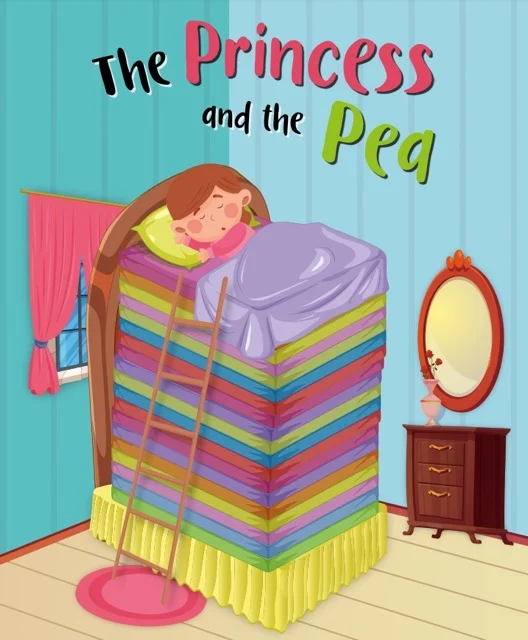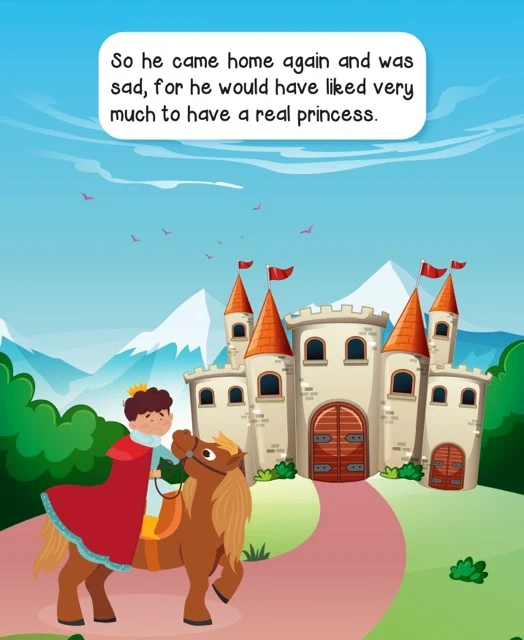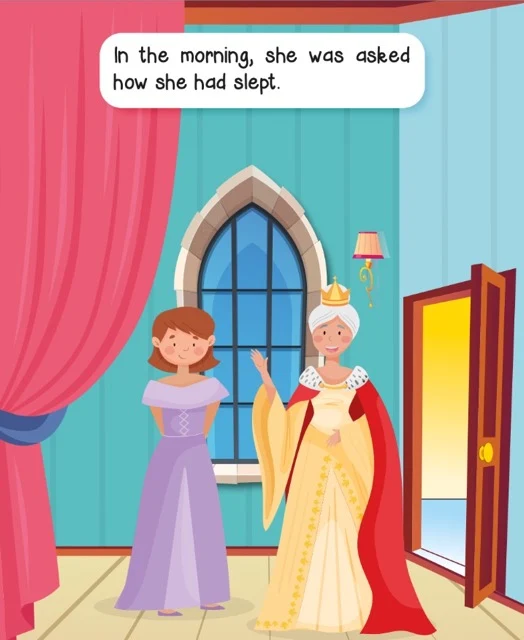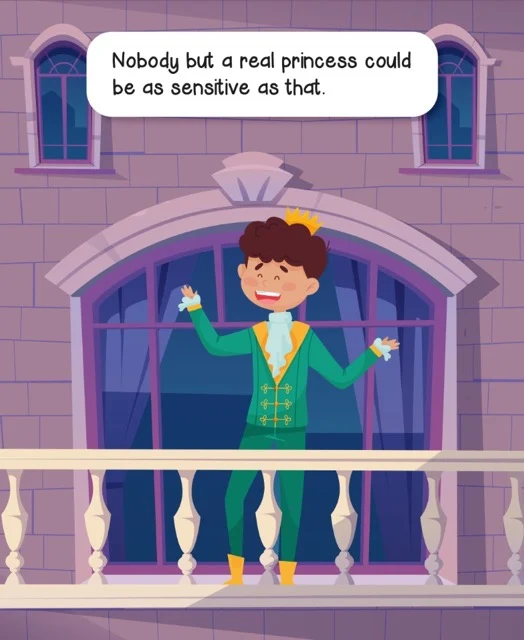The Pea and the Princess: A Critical Analysis
This briefing paper analyzes Hans Christian Andersen's "The Princess and the Pea," exploring its themes of sensitivity, true nobility, and social commentary. The pea symbolizes hidden character, while the mattresses represent superficial appearances. The story uses the storm as a metaphor for life's challenges, ultimately advocating for kindness and the importance of inner qualities over lineage. The analysis examines the tale's enduring appeal and its prompting of questions about genuine character and worth. Different interpretations, including satire of class obsession, are considered.
The Princess and the Pea: A Thematic Analysis
Briefing Doc: Exploring the Themes and Ideas of "The Princess and the Pea"
This briefing document analyzes "The Princess and the Pea" using multiple sources, focusing on its main themes, symbolism, and key takeaways.
Central Plot & Characters:
The story centers around a prince desperate to marry a "true" princess. One stormy night, a drenched woman claiming to be a princess arrives seeking shelter. The queen, skeptical, tests her by placing a pea beneath numerous mattresses.
Sensitivity and True Nobility:
●
The story's central theme is sensitivity, not as weakness, but as a marker of genuine character. The princess's discomfort proves her royal lineage, as only someone with refined sensibilities would feel the pea.
○
"Her sensitivity proves she is a genuine princess, as only a true princess could possess such delicate sensibilities." (The Princess and the Pea: A Comprehensive Guide)
Symbolism:
●
The Pea: Represents the hidden depths of true character. Only someone truly noble is sensitive enough to perceive it.
○
"The pea represents sensitivity and true nobility. The princess's ability to feel it highlights the idea that true worthiness is often hidden beneath the surface." (Understanding "The Princess and the Pea")
●
Mattresses: Symbolizes the ways people conceal their true nature, putting up facades that obscure inner qualities.
●
Storm: Represents challenges and turmoil that test a person's character. The princess braving the storm demonstrates resilience.
Satire and Social Commentary:
●
Some argue the tale satirizes obsession with lineage, mocking the idea that true worth is determined by birth. The absurd test highlights the superficiality of judging based on appearances.
○
"Andersen may be satirizing the obsession with lineage and the superficiality of judging worth based on appearances." (Understanding "The Princess and the Pea")
Lessons and Appeal:
●
The story champions kindness and hospitality, as the royal family welcomes the princess despite the storm.
●
It teaches the importance of inner qualities over external factors, a message resonating with young readers.
○
"The story teaches children about the importance of kindness and hospitality... It also highlights that true worthiness can reveal itself in unexpected ways." (Understanding "The Princess and the Pea")
Beyond the Surface:
While seemingly simple, "The Princess and the Pea" sparks discussion on what constitutes genuine character. Is sensitivity a strength or a weakness? Is true worth innate or earned? These questions make the tale relevant beyond its fairytale charm.
The Princess and the Pea: A Comprehensive Guide
The Princess and the Pea: FAQ
1. What is the main plot of "The Princess and the Pea"?
The story revolves around a prince who desires to marry a true princess. One stormy night, a young woman claiming to be a princess seeks shelter in the prince's castle. To test her claim, the queen devises a plan. She places a single pea at the bottom of a towering stack of mattresses.
2. How does the princess prove her royal lineage?
The princess spends a sleepless night, tossing and turning due to discomfort. In the morning, she reveals that she could feel the tiny pea beneath the mountain of mattresses. Her sensitivity proves she is a genuine princess, as only a true princess could possess such delicate sensibilities.
3. What is the central theme of the story?
The story explores the theme of sensitivity and the idea that true nobility is not merely a matter of birth but also of character. The princess's sensitivity is a symbol of her refined and genuine nature, setting her apart from ordinary women.
4. Is "The Princess and the Pea" based on a true story?
No, "The Princess and the Pea" is a fairy tale written by Hans Christian Andersen. While it presents a charming and thought-provoking narrative, it is not based on historical events.
5. What are the key symbols in the story?
The pea acts as the central symbol, representing sensitivity and true nobility. The high stack of mattresses symbolizes the lengths to which people might go to conceal their true nature. The storm can be seen as a symbol of turmoil and the challenges that test one's character.
6. What is the significance of the happy ending?
The prince and the princess's marriage symbolizes the triumph of true character over superficial appearances. It reinforces the idea that sensitivity and inner worth are valuable qualities.
7. How does the story appeal to children?
"The Princess and the Pea" is a short, engaging story with a simple yet powerful message. Children are drawn to the fairytale elements, the princess character, and the humorous situation of the pea beneath the mattresses.
8. What are some of the lessons learned from the story?
The story teaches children about the importance of kindness and hospitality, as the royal family welcomes the princess despite the storm. It also highlights the value of inner qualities over outward appearances and the idea that true worthiness can reveal itself in unexpected ways.
Understanding "The Princess and the Pea"
A Deep Dive into "The Princess and the Pea"
Short Answer Quiz
Instructions: Answer each question in 2-3 sentences.
1.
What is the prince's primary desire at the beginning of the story?
2.
Describe the test the queen devises to determine if the young woman is a true princess.
3.
How does the princess react to the night spent in the royal bedchamber?
4.
Explain how the princess's reaction reveals her true nature.
5.
What symbolic meaning can be attributed to the pea in the story?
6.
How does the storm that occurs at the beginning of the story contribute to the plot?
7.
Is the story "The Princess and the Pea" based on a true story? Justify your answer.
8.
What is the significance of the marriage between the prince and the princess at the story's end?
9.
Why does "The Princess and the Pea" resonate with young readers?
10.
Identify one lesson that the story teaches children.
Short Answer Quiz Answer Key
1.
The prince's primary desire is to find a true princess to marry. He has been searching but has not been able to determine if any of the princesses he has met are truly royal.
2.
The queen places a single pea at the bottom of a very high stack of mattresses. She believes that only a true princess would be sensitive enough to feel the pea through all the mattresses.
3.
The princess has a terrible night's sleep. She tosses and turns all night and is unable to get comfortable.
4.
The princess's discomfort reveals that she is extremely sensitive. Only a true princess would be able to feel the tiny pea through such a large number of mattresses. Her sensitivity proves her royal lineage.
5.
The pea represents sensitivity and true nobility. The princess's ability to feel it highlights the idea that true worthiness is often hidden beneath the surface.
6.
The storm creates the circumstances that lead the princess to the castle. It also symbolizes turmoil and the challenges that test a person's character.
7.
"The Princess and the Pea" is not based on a true story. It is a fairy tale written by Hans Christian Andersen and is meant to teach a lesson rather than relate a historical event.
8.
The marriage symbolizes the triumph of true character over superficial appearances. It shows that inner qualities, like sensitivity, are valuable and should be prioritized over external factors.
9.
The story's fairytale elements, the princess character, and the humorous situation of the pea under the mattresses make it appealing to young readers. The story is short, engaging, and easy to understand.
10.
The story teaches children about the importance of kindness and hospitality, as seen in the royal family welcoming the princess despite the storm. It also highlights that true worthiness can reveal itself in unexpected ways.
Essay Questions
1.
Analyze the use of symbolism in "The Princess and the Pea," focusing on the pea, the stack of mattresses, and the storm.
2.
Discuss the theme of sensitivity in the story. How is sensitivity portrayed, and what message does the story convey about its importance?
3.
Compare and contrast the character of the princess with other princesses found in fairy tales. What makes her unique?
4.
Explore the satirical elements in "The Princess and the Pea." How does Andersen use humor to critique societal norms and expectations?
5.
How does the story's ending reinforce the idea that true worth is more important than outward appearances?
Glossary of Key Terms
Sensitivity: The quality of being easily affected or influenced by external stimuli; in the context of the story, it refers to the princess's ability to feel the pea despite the layers of mattresses, highlighting her refined nature.
Nobility: The quality of being noble in character, mind, or rank; in the story, it is not merely associated with birthright but also with inner qualities like sensitivity and kindness.
Symbolism: The use of objects, characters, or events to represent abstract ideas or concepts; in "The Princess and the Pea," the pea, the mattresses, and the storm all function as symbols.
Fairy Tale: A genre of fictional story that typically features fantastical elements, such as magical creatures and enchanted settings, and often conveys a moral lesson.
Satire: The use of humor, irony, or exaggeration to criticize or expose societal flaws or human vices; Andersen may be satirizing the obsession with lineage and the superficiality of judging worth based on appearances.
Character: The mental and moral qualities distinctive to an individual; in literary analysis, it refers to the personalities and motivations of the figures in a story.
Theme: The central idea or message explored in a literary work; the main themes of "The Princess and the Pea" include sensitivity, true worth, and the importance of inner qualities.





















